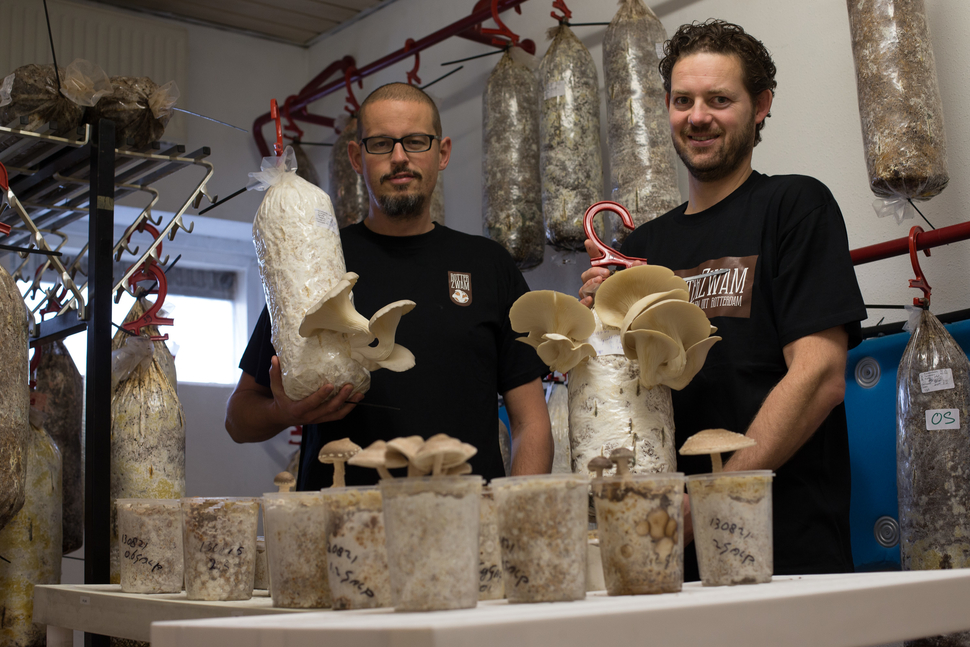Blue Economy strives to make people and the environment happy and healthy with what we can locally find in the environment. By producing locally, people have more control on their environmental impact. An example, biodegradable soaps that seem sustainable for western people are actually made of palm oil, which come from plantations that have destroyed the rainforest in countries as Indonesia. Organic food is shipped around the world and bio plastics compete with food, which is a problem with a rising global population that requires more land to produce food. The green economy is therefore not always as sustainable and feasible as it suggests.
A bit skeptical about ‘Blue economy’ I went to Pakhuis De Zwijger on 4 November 2014 to attend a lecture given by Gunter Pauli. As explained by the Guru himself, the blue economy keeps production local, which stimulates employment and boosts local economy while being in balance with the environment. Although I was very inspired by his speech I do not see the world transitioning to this strategy because of globalization. Besides this, western needs require resources which cannot be locally produced. As the Zeri movie clip states Blue economy means ‘Making people healthy and happy with what we did not know we had’. But how can we do this, if we do not know what we have? It requires expertise on your local area, entrepreneurs who make it happen, strong communities who can exchange knowledge and small trials to be proven effective before it can be implemented on larger scale. Which entrepreneur would want to go on this treasure hunt which requires a lot of time, knowledge and money to discover how we can use what we already have, where we are not aware of yet?
In short, I did not see it happen for the Netherlands until I read the article ‘Ocean and Coastal Management’ by B. Huang about small islands. Small islands are dependent of an equilibrium between environment and economy, since import of natural resources results in significant transportation costs and creates the risk of external shocks. Their isolation makes self-support (local production) a necessity for environmental, social and economic survival of the island. This means there could be an internal motivation for citizens to pursue a blue economy, since self-support contributes to a better life on the island financially, socially and for the environment. Since Texel has a strong community, this could be an opportunity for people to bundle forces and find out a way to live in balance with nature while stimulating local economy and employment. But what would it take to make it happen?
Sustainable development always asks for an interdisciplinary team since sustainable development is about processes and systems which are too hard to grasps on your own. Different expertise and perspectives help to envision the complete picture and make you think about elements you would not have thought about on your own. Therefore I believe implementing blue economy on Texel would need an interdisciplinary team, which at least contains an ecologist who knows the eco-system of Texel very well. Although an ecologist knows what is available, he/she may not know how to convert this into a product or service. Designers and people with an expertise in business can therefore be useful. Engineers may even be able to build a technology around it based on working principles of nature. A community of Texel citizens who know their needs and challenges may be useful as well to give input on how these resources can be used in daily life. I believe that something simple as a walk on the island with all these experts listening to the ecologist, who tells about the things he/she sees, would already spark creativity to find a way to implement blue economy.
